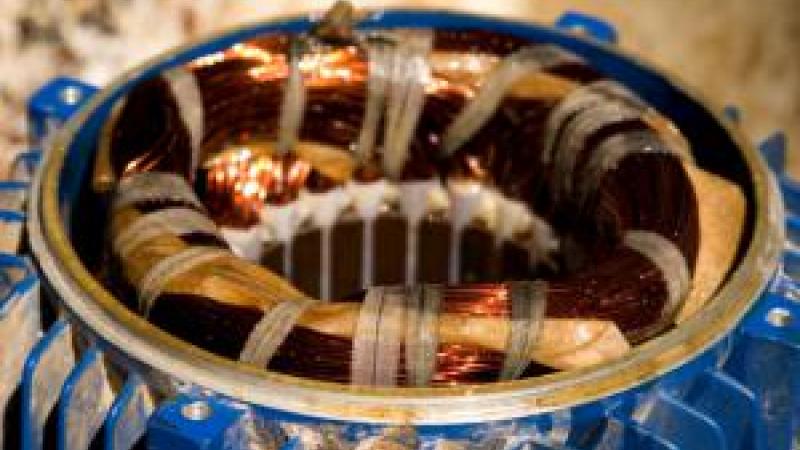Root Cause Failure analysis on electric motors
This training is aimed at anyone wishing to tackle the real root causes of electric motor failures rather than just the symptoms.
BEMAS en EASA (Electrical Apparatus Service Association) are proud to offer a unique hands-on training course specifically focused on the analysis of Root Cause Failures of electric motors.
This training is aimed at anyone wishing to tackle the real root causes of electric motor failures rather than just the symptoms. In this context, it is crucial to correctly analyse and fully document the condition of an electric motor during preventive maintenance or in the event of a fault. This way, a correct diagnosis of the failure can be made. This will result in a well-founded repair decision and any underlying causes of the failure can be addressed.
This training focuses on both common and uncommon types of faults, broken down by component. Therefore, this is not just a theoretical course, but there are also several practical sessions where the theory can be tested immediately on existing industrial motors with various failure patterns. After the training, you will be able to draw up a diagnosis report of an electric motor, in accordance with the EASA standard.
Short content
The methodology of Root Cause Analysis,
- Bearing problems,
- Problems with windings,
- Rotor problems,
- Shaft problems,
- Mechanical problems,
- DC motor faults,
- Accessory problems,
- Case studies, ...
+ 6 workshop sessions to practice analysing electric motors. Participants evaluate examples of real-life failures on electric motors. Each theory session is followed by hands-on practice.
+ Comprehensive reference work (in English)
The theory and presentations are complemented by an extensive reference book. This manual contains hundreds of photos of numerous faults, with their possible causes. The book also includes a CD-ROM with the pdf version of the book. More information on the manual.
+The new ANSI/EASA AR100-2015 standard.
This standard, published in August 2015 contains recommended practices for the repair of electrical rotating machinery. Almost 100 changes have been made since the previous edition. An indispensable tool for this training!

This training focuses on both common and uncommon forms of failure, broken down by component. This is therefore not only a theoretical course, but there are also several practical sessions where the theory can be immediately tested on existing industrial motors with various failure patterns. After the training, you will be able to draw up a diagnosis report of an electric motor, in accordance with the EASA standard.
Programme
- The methodology of Root Cause Analysis
- Introduction to Root Cause Analysis,
- The methodology of Root causes,
- Engine loads,
- Analysis of motors and systems,
- Basic concepts of AC motors,
- Basic concepts of DC motors,
- Explanation of standard form Electrical Motor Root Cause Methodology, ...
- Bearing problems
- Determining the lifetime of bearings,
- Fatigue processes and loads on rolling bearings,
- Method to analyse bearing faults,
- Tips for interpreting bearing faults,
- Lubrication data,
- Types of load on bearings, ...
- Faults on a stator winding
- Introduction to windings,
- Analysis of winding problems:
- Fault Analysis
- Fault patterns, ...
- The methodology of damage patterns and winding faults:
- Overheating of phases: 1/3, 2/3, all phases overheated,
- Winding on ground, ...
- Thermal load::
- Thermal aging,
- Overload,
- Voltage variation,
- Voltage unbalance,
- Load curve,
- Starting, ...
- Electrical load:
- Dielectric aging,
- Harmonic influence,
- Discharge (corona),
- Insulation problems, ...
- Mechanical load:
- Winding movement,
- Mechanical backlash,
- Damaged connection cables,
- Loss of air gap,
- Bad connections, ...
- Environmental stress:
- Moisture,
- Contamination,
- Poor ventilation,
- Chemical influences, ...
- Winding material:
- Properties of insulation material,
Handling methods,
temperature,
Calendaring material,
Insulation material,
security,
Material for tin plate, ...
- Properties of insulation material,
- Rotor problems
- Introduction to rotor problems,
Methodology for analysing rotor problems,
Thermal load:- Views,
Fault class,
Rotor-sparks, ...
- Views,
- Dynamic load:
- Appearance,
- Fault class,
- Centrifugal forces,
- Overspeed,
- Ring tensions, ...
- Mechanical load:
- Appearance,
Fault class,
Problems with rotor castings,
Aluminium versus copper rotor cages,
Loosening of rotor bars,
Imbalance in the rotor,
Tilt adjustment of the rotor, ...
- Appearance,
- Introduction to rotor problems,
- Environmental load,
- Magnetic load,
- Appearance,
- Fault class,
- Electromagnetic effects,
- Unbalanced magnetic attraction forces,
- Motor frictions,
- Electromagnetic noise,
- Electromagnetic vibrations, ...
- Residual load,
Special cases in the testing of induction motors, ...
- Residual load,
- Shaft problems
- Introduction to shaft problems,
- Materials,
- Different forms of shaft loading,
- Sequence of fault analysis,
- Methodology of analysis,
- Causes of failures,
- The fatigue process,
- Dynamic and mechanical loading,
- Environmental load,
- Thermal load,
- Residual load,
- Electromagnetic load, ...
- Mechanical failure
- Introduction to mechanical failures,
- Cooling system,
- The terminal box,
- Explosions in the terminal box,
- Lifting equipment,
- Assembly,
- Alignment, ...
- Malfunctions of DC motors
- Introduction to DC Motors,
- Anchors:
- Thermal load,
- Electrical load,
- Mechanical load,
- Dynamic load
- Collectors:
- Burn-in,
- Lamellar markings,
- Uncircularity,
- Milling out,
- Wear patterns, ...
- Carbon brushes
- Burning in,
- Connections
- quality,
- Current flow, ...
- Brush holders:
- Brush pressure,
- Staffing,
- Resilience, ...
- Stator housing:Statorhuis:
- Thermal load,
- Electrical load,
- Mechanical load,
- Dynamic load, ...
- Main field windings:
- Shunt winding,
- Series winding,
- Compound winding, ...
- Auxiliary windings:
- Pole winding,
- Compensation winding,
- Ventilation
- Tachometers,
- …
- Other faults
- Overvoltage protection,
- Lightning conductors,
- Thermal protection,
- heating,
- Couplings,
- Ventilators,
- Vibration sensors
- bearing sensors,
- Case studies
- Winding errors,
- Incorrect applications of the motor,
- Wrong adapted spherical plain bearing,
Practical workshops
During the practical workshops, the participants carry out real-time error analyses on actual failed engines. These are analysed in different groups and then discussed. After a theoretical block, what has been learned is put into practice in Maintenance Partners' state-of-the-art workshop. The following exercises are performed:
- Bearings: failure of roller bearings due to shaft currents, lack of lubrication, failure of sleeve bearings due to excessive radial load, etc.
- Stators: breakdown between phases, breakdown to ground, coil burnt out, phase burnt out, can closures, ...
- Rotors: broken rotor bars, loose rotor bars, broken short-circuit rings, ...
- Shafts: shaft rupture due to rotation bending, run-in bearing arrangements, shaft rupture due to overloading, key breakage, ...
- Combined mechanical and electrical problems,
- Faults in the protection chain,
- DC motor problems
After each exercise, the trainers hold a short discussion about the findings and learning points of each group.
Who is this training for?
Anyone responsible for electric motors who wants to know more about the root causes of failures:
- Electrical maintenance technicians,
- Supervisors,
- Condition monitoring specialists,
- Maintenance engineers,
- Quality engineers,
- ...
Maximum number of participants: 12
A basic knowledge of electricity and the operation of electric motors is desirable. The organisation also reserves the right to refuse registration of participants on the basis of conflicting interests.






